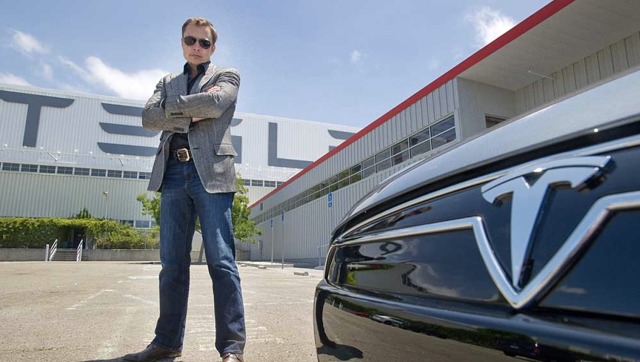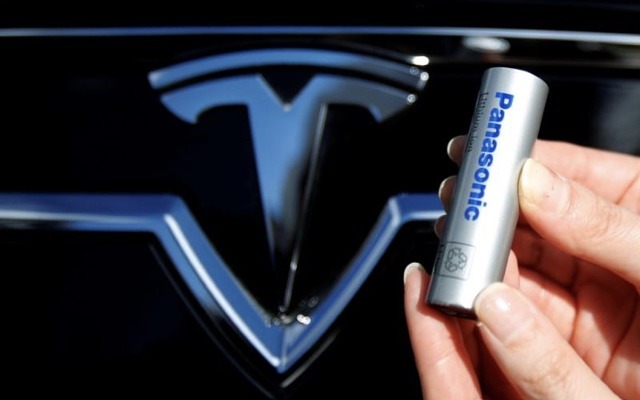Panasonic and Tesla seek to remove cobalt from electric car batteries

The use of cobalt in lithium-ion batteries could be discharging to a premature end.
Despite the fact that a whole troop of cobalt explorers has gone off into the field with shovels and drill bits in hand – the presence of cobalt as a critical element in lithium-ion batteries could be surplus to requirements, according to Panasonic, one of the world’s leading battery manufacturers and current partner to the world’s leading electric car maker Tesla.
Cobalt prices have staged an all-mighty up-trend over the past two years, rising from around US$20,000 per tonne in 2016 to about US$80,000/t today. Prices reached a high of US$94,000/t in March this year, according to the London Metals Exchange (LME) – and its largely due fears of runaway inflation that is spurring battery manufacturers and end-users such as Tesla to seek alternatives.
During a company presentation last month, the chief of Panasonic’s automotive business, Yoshio Ito said that Panasonic has been working closely with Tesla and preparing to accelerate production of battery cells it supplies to Tesla as electric car maker continues to expand production of its Model 3 car, aiming to hit 5,000 units a week by the end of June 2018.
Almost in parallel, Tesla has hinted that it is “significantly reducing cobalt content” across its entire range of batteries used for all vehicle types, including its latest development, the Tesla Semi unveiled late last year.

Panasonic’s senior vice president Kenji Tamura – the man in charge of its energy business – weighed in with comments that further indicating cobalt may soon be replaced by alternatives.
“We have already cut down cobalt usage substantially,” said Mr Tamura. “We are aiming to achieve zero usage in the near future, and development is underway,” although the company has not specified exactly what materials it plans to use as a replacement for cobalt.
Most industry analysts concur it is likely to be nickel (for the time being) although other exotic technologies using vanadium, zinc and even graphene, could potentially come to the fore as research and development continues.
Battery makers sing the cobalt blues
Cobalt is currently used as a specialty ingredient in the manufacture of precision parts in aircraft, industrial machinery and other tools. However, by far the largest source of demand has been lithium-ion batteries.
According to industry analysts, the most popular type of lithium-ion battery uses cobalt, nickel and manganese but only cobalt prices have risen sharply because of its relative rarity. Cobalt is mined as a by-product in most mines with very few pure cobalt mines operational anywhere in the world.
Incentivised by rising prices of lithium, cobalt and graphite (the three major components of lithium batteries) several manufacturers have begun to study alternative cathode formulas that use more nickel and less cobalt.
The standard recipe for the preferred nickel-manganese-cobalt (NMC) lithium-ion batteries consists of 60% nickel, 20% manganese and 20% cobalt.
Some companies such as SK Innovation in Korea, potentially Panasonic and several other Asian manufacturers are looking into augmenting this 6:2:2 ratio into an 8:1:1 alternative which puts greater emphasis on nickel rather than cobalt.

For a new energy future to emerge, the future supply of lithium, graphite and cobalt is expected to rise substantially in order to facilitate growing battery production by the likes of Panasonic and Tesla – but cobalt’s sharp appreciation has forced battery makers into devising alternatives, and it’s not only for economic reasons.
The world’s largest supplier of cobalt Glencore and the largest cobalt mine in the world based in the Democratic Republic of Congo (DRC) has run into political and ethical problems that have only added to dwindling supply worries.
The DRC has found itself embroiled in questionable internal politics, mining law changes and human rights abuses that have soured sentiment amongst large manufacturers such as Apple and Panasonic. Both companies have publicly denounced the DRC, as a non-viable source for the raw materials in their products.
The sharp increases in cobalt and lithium demand in recent years has put pressure on production supply routes and brought to the surface an unsightly problem bellowing in the underbelly of African resource exploration: an unstable political climate with debilitating effects of civil war, poor living conditions and archaic mining standards.
As a result of the complex picture in the DRC and continuing cobalt price inflation, cobalt explorers and miners could be in danger of seeing their chosen resource losing its energy storage market potency – although it’s still early days to say which form of battery technology will ultimately rule the roost in the years to come.
